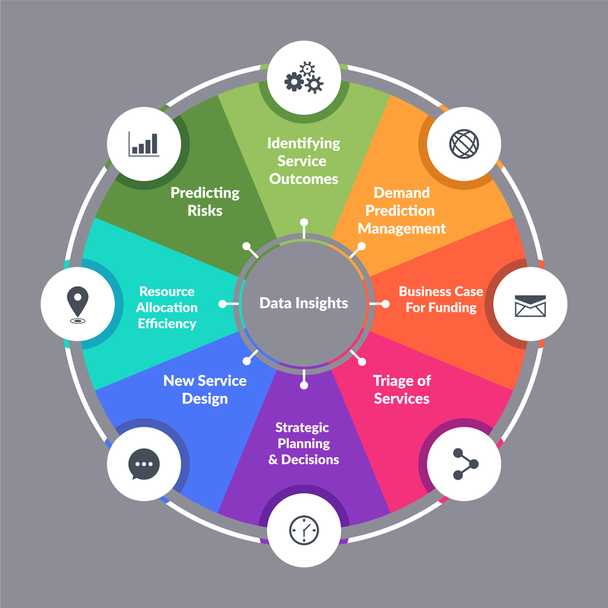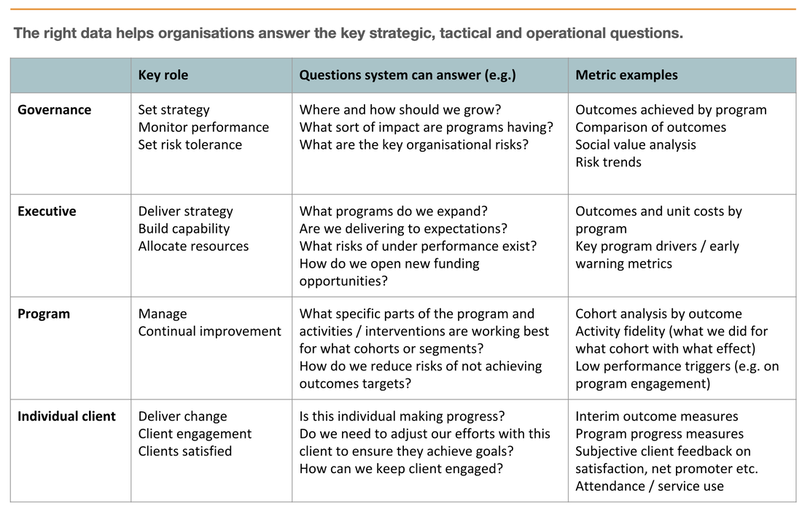Analyse your data to solve a complex problem |
Our Insights service helps you make sense of existing data to address critical questions, navigate complex issues within your organisation and make informed decisions based on robust analysis.
|
What we offer |
Analytics examples |
|
Sometimes just mapping what data you have is a good place to start... |
What kinds of problems can benefit from data analysis?

- Business case for funding - analysis can show the overall impact of a program and back up anecdotal stories of impact with objective measures to satisfy funders; this can even form the basis for outcomes-based funding applications.
- Strategic planning & decisions - for Board-level decisions such as expanding services in new geographies, closing or opening new services, applying for new funding streams or partnering with other organisations.
- Learn what services work best for what cohorts or needs - identifying which service types or intensities deliver what kind of outcome.
- Mapping systems for more efficient allocation of resources (such as housing, staff time, brokerage funds, residential services or other expensive resources) and matching to need for highest impact per dollar.
- Predicting risks, such as risk of not achieving program outcomes, or risk of program disengagement, based on intake data.
- Triage of services to allocate the right ‘dosage’ of program time for maximum impact.
- Understanding demand and needs across a system to predict and better manage demand, particularly for programs with fixed amounts of service delivery and high demand.
- Design a new service or solution in an area of need - quant and qual data, innovation workshops, solution development process, testing solutions using A|B testing data to refine and prove impact.
Our vision for Data Analytics for Social Impact
Mission-driven organisations are high-performing, deliver results that matter to the service user and do this cost effectively using sophisticated data systems.


